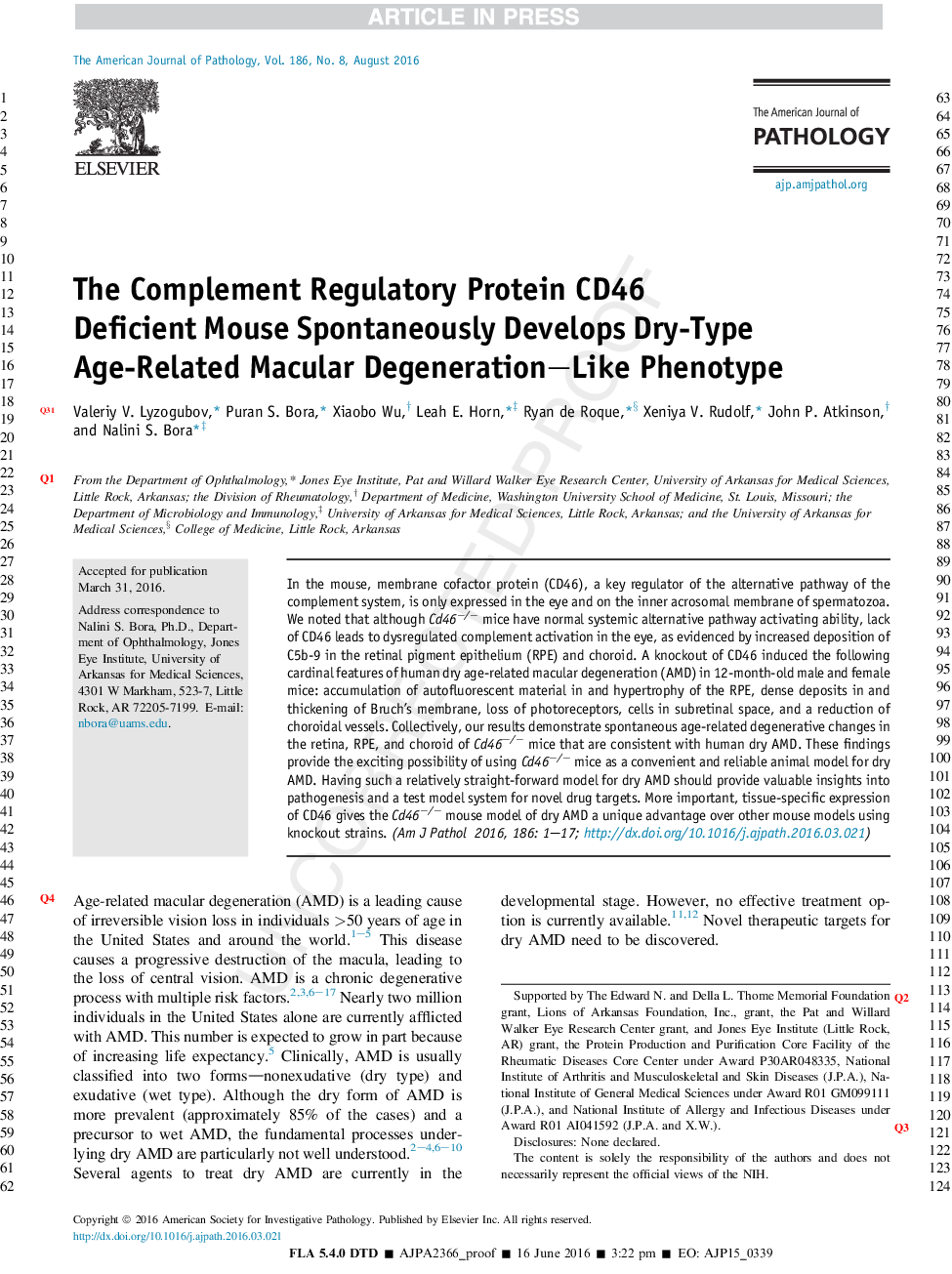| Article ID | Journal | Published Year | Pages | File Type |
|---|---|---|---|---|
| 5932094 | The American Journal of Pathology | 2016 | 17 Pages |
Abstract
In the mouse, membrane cofactor protein (CD46), a key regulator of the alternative pathway of the complement system, is only expressed in the eye and on the inner acrosomal membrane of spermatozoa. We noted that although Cd46â/â mice have normal systemic alternative pathway activating ability, lack of CD46 leads to dysregulated complement activation in the eye, as evidenced by increased deposition of C5b-9 in the retinal pigment epithelium (RPE) and choroid. A knockout of CD46 induced the following cardinal features of human dry age-related macular degeneration (AMD) in 12-month-old male and female mice: accumulation of autofluorescent material in and hypertrophy of the RPE, dense deposits in and thickening of Bruch's membrane, loss of photoreceptors, cells in subretinal space, and a reduction of choroidal vessels. Collectively, our results demonstrate spontaneous age-related degenerative changes in the retina, RPE, and choroid of Cd46â/â mice that are consistent with human dry AMD. These findings provide the exciting possibility of using Cd46â/â mice as a convenient and reliable animal model for dry AMD. Having such a relatively straight-forward model for dry AMD should provide valuable insights into pathogenesis and a test model system for novel drug targets. More important, tissue-specific expression of CD46 gives the Cd46â/â mouse model of dry AMD a unique advantage over other mouse models using knockout strains.
Related Topics
Health Sciences
Medicine and Dentistry
Cardiology and Cardiovascular Medicine
Authors
Valeriy V. Lyzogubov, Puran S. Bora, Xiaobo Wu, Leah E. Horn, Ryan de Roque, Xeniya V. Rudolf, John P. Atkinson, Nalini S. Bora,
